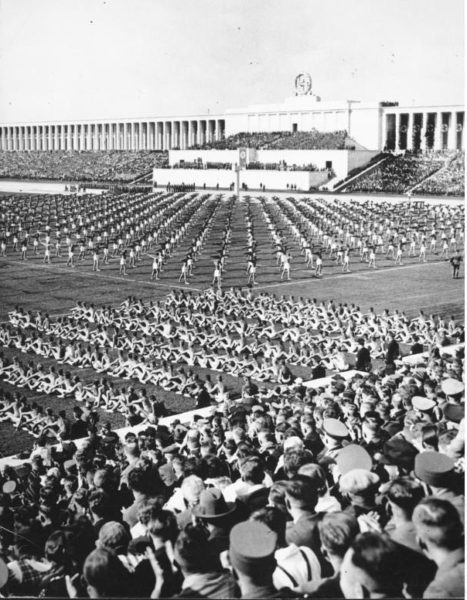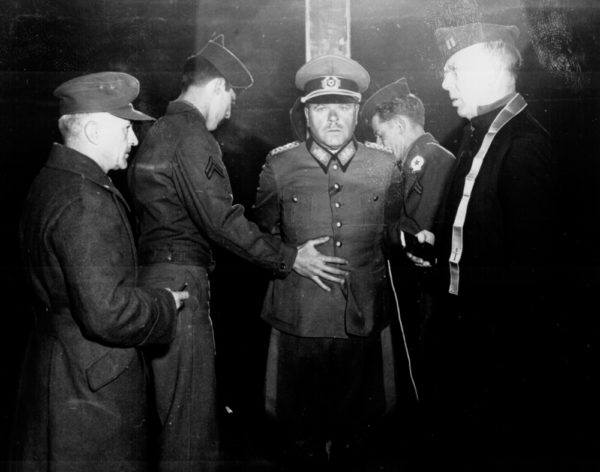The next two blogs (including this one) are a result of our recent river cruise from Budapest to Amsterdam. Along the way, we floated up and down three different rivers, one big canal, and went through sixty-eight locks (yes, you read this correctly—68 locks). One of the primary reasons we chose this trip was the day-visit to Nuremburg, Germany and the “World War II Excursion.” The alternate excursion was to the Nuremburg Toy Museum so you can guess it wasn’t a hard choice for us.
We visited two historical sites: Zeppelin Field where the massive pre-war night-time Nazi rallies were held and the interior of the courtroom where the highest surviving Nazi leaders were tried in 1945/46 on four counts, including crimes against humanity.
Nazi Party Rally Grounds

Located southeast of the old town of Nuremberg, Zeppelinfeld (Zeppelin Field) is part of a larger complex known as the Nazi Party Rally Grounds. In August 1909, Count von Zeppelin landed one of his airships on this location thereby giving the field its name. Other buildings on the grounds included the Luitpoldarena (deployment area), the Luitpold Hall (“Old Congress Hall”—damaged during the war and later demolished), the Kongresshalle (“Congress Hall”—still standing but never fully completed), the Märzfeld (March field—demolished), the Deutsche Stadion (“German Stadium”—only its foundations were built), the Stadion der Hitlerjugend (“Stadium of the Hitler Youth”—today it’s the Frankenstadion), and the Große Straße (“Great Road”—completed but never used). Only the Zeppelin Field, the Luitpoldarena, and the Große Straße were completed by the Nazis. By 1939, the focus of the Nazi party was on obtaining the labor and materials needed to support the German war efforts and not on the completion of their rally grounds (the last rally, “The Party Rally of Peace” scheduled for 2 September 1939, was abruptly cancelled when Hitler attacked Poland on 1 September 1939). Read More Zeppelin Field


